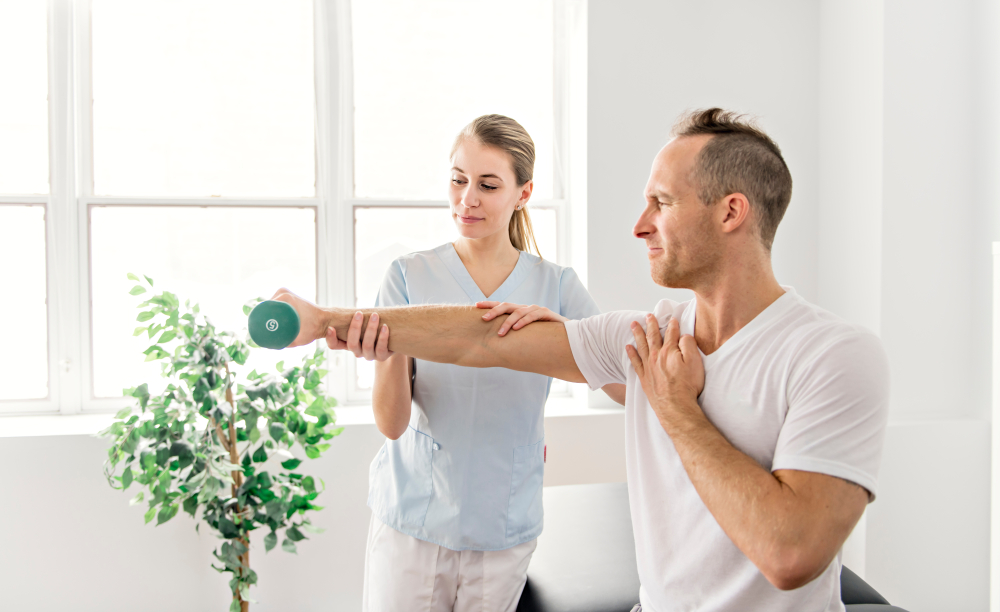You thought just athletes and sports fanatics were prone to rotator cuff tears? Nope. In fact, nearly 20% of people will experience a torn rotator cuff, according to a research study. The study also found that the frequency increases with age. And, research estimates that shoulder pain affects 31% of Americans each month. Maybe you can relate. Have you been experiencing pain related to a torn rotator cuff and been told you need surgery to fix it?
The good news is that physical therapy can help speed up your recovery after you’ve had rotator cuff surgery. Regardless, though, recovering from rotator cuff surgery will take time. It can take anywhere from four to six months for you to fully recover from rotator cuff surgery with physical therapy.
Why does it take so long to heal from rotator cuff surgery with physical therapy?
Your shoulder is made up of a ball-and-socket joint. The rotator cuff’s job is to keep the ball portion of the joint centered in the socket. When the rotator cuff is torn or compromised, it can cause pain in your shoulder and arm. The healing process takes time because of the usage and location of the joint.
Exercises for after surgery
You may find yourself looking for ways to safely move your shoulder after surgery and reduce how long you have to attend physical therapy. It’s important to work with your physical therapist to learn which exercises can help you safely strengthen your joint. Check out these most recommended physical therapy exercises to do after rotator cuff surgery:
- Reaching exercises — While sitting in a chair, gently raise your arms over your head, straightening as much as you can comfortably. Alternate moving each arm forward, acting like you are reaching for something.
- Assisted shoulder elevation — You can try this exercise while sitting or standing. Begin by cupping your hands together, slowly lifting your arms toward your head. Try to keep your arms as straight as comfortably possible. After about 20 seconds, lower your arms back to the starting position.
- Rotator cuff strength — While standing, place your arms slightly behind your back and clasp your hands together. Stretch your arms as much as is comfortably tolerated and slowly raise your arms.
At Panther Physical Therapy, our experienced physical therapists can work with you both before and after your surgery to get you on the road to recovery. Contact our team today for more information or to schedule an initial appointment.
